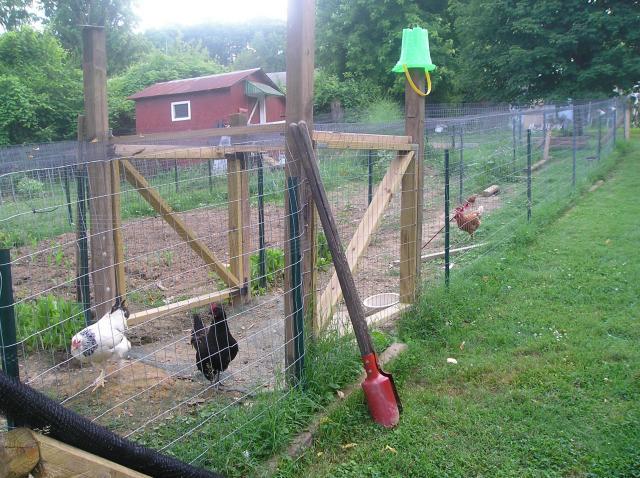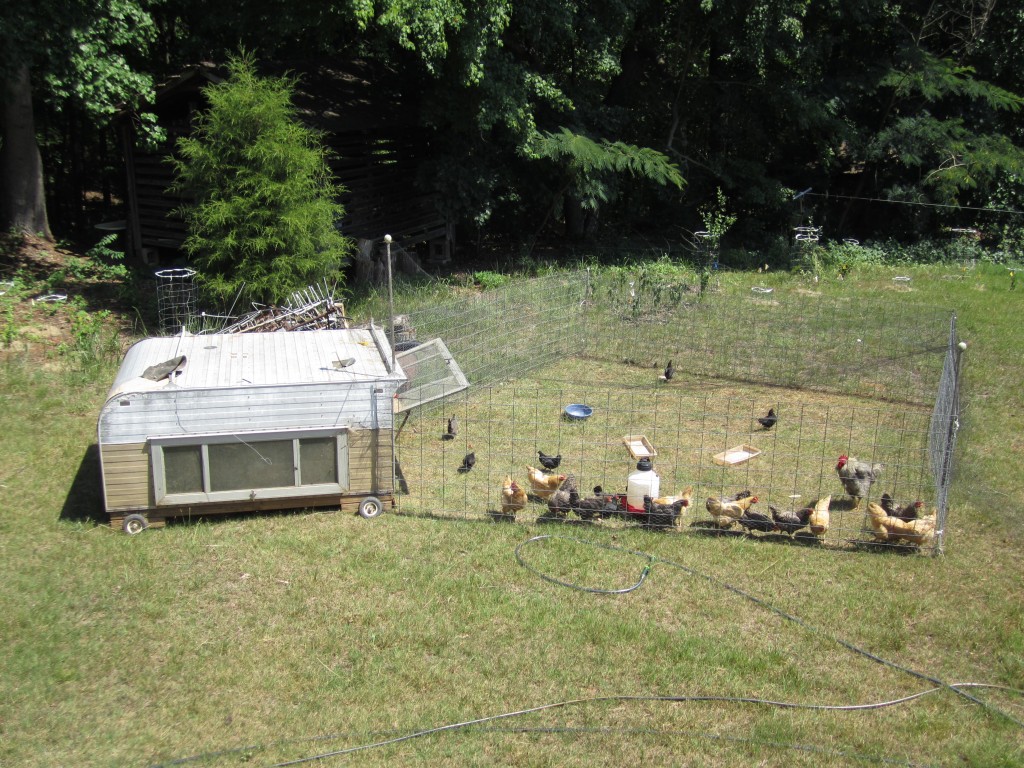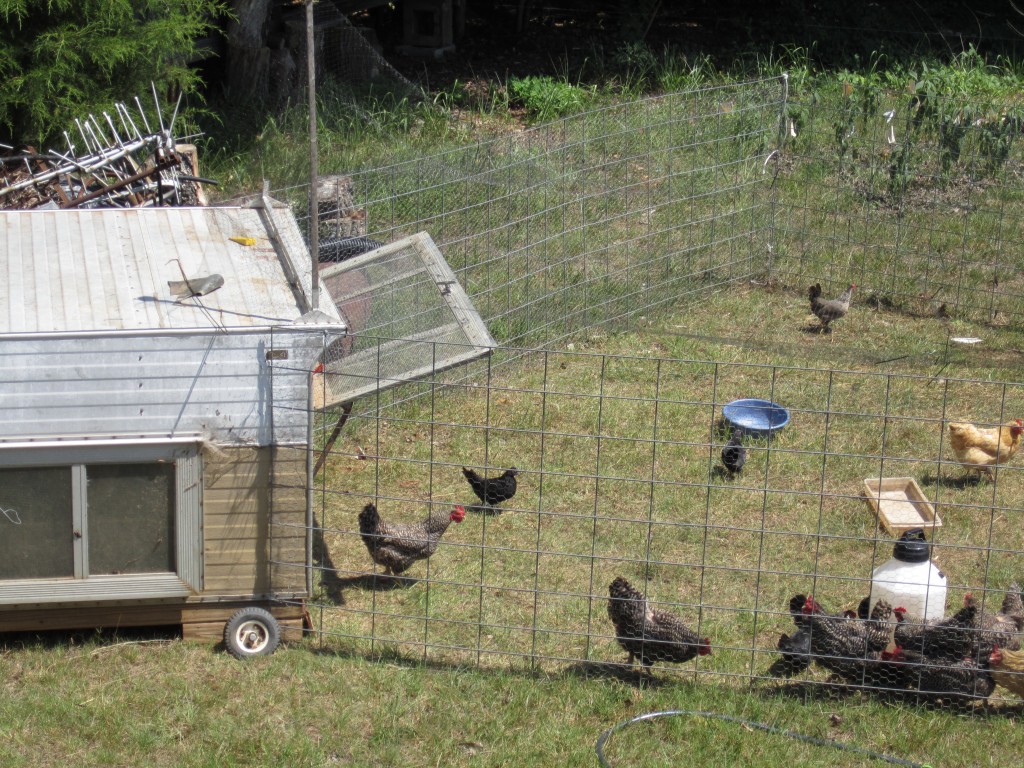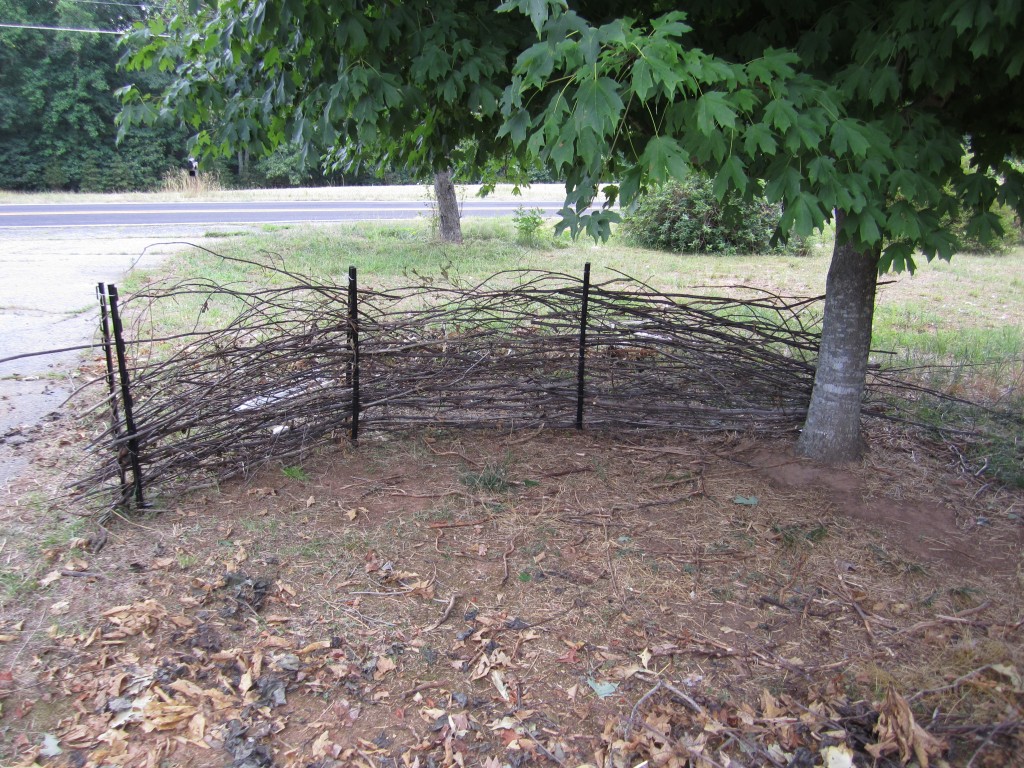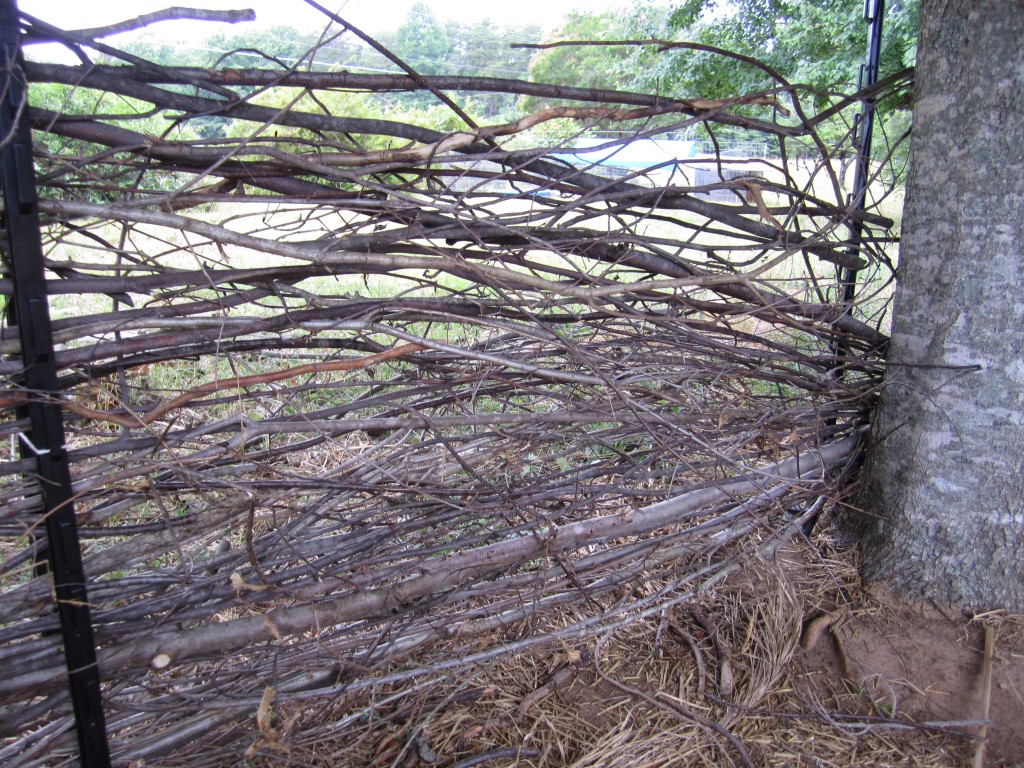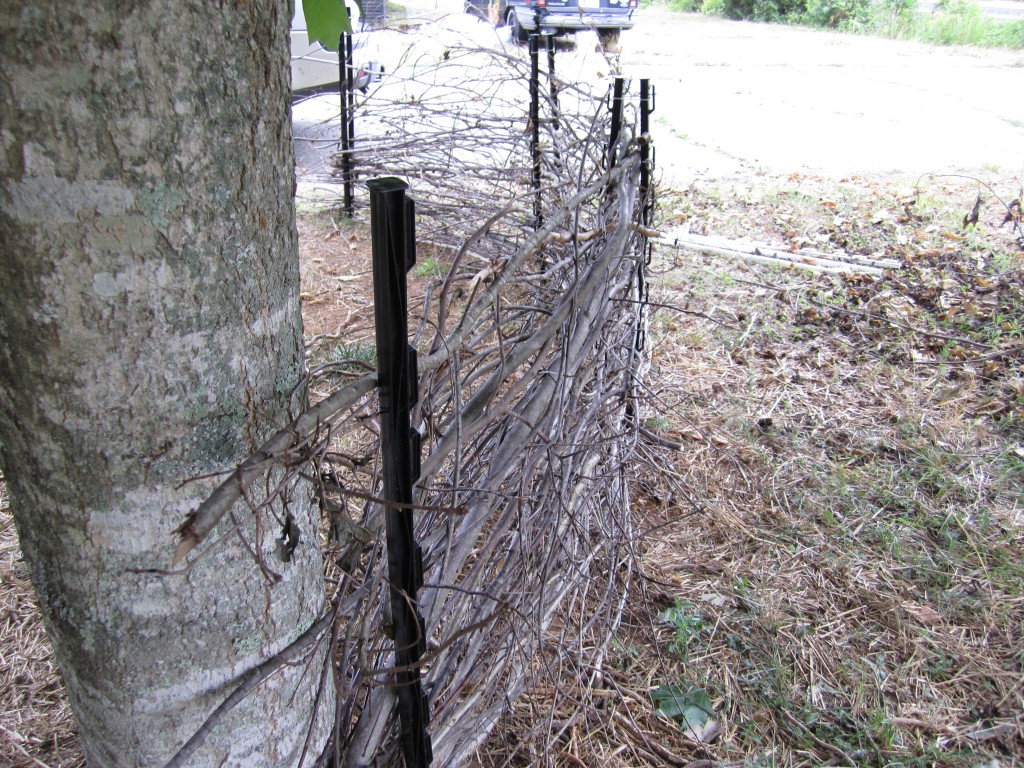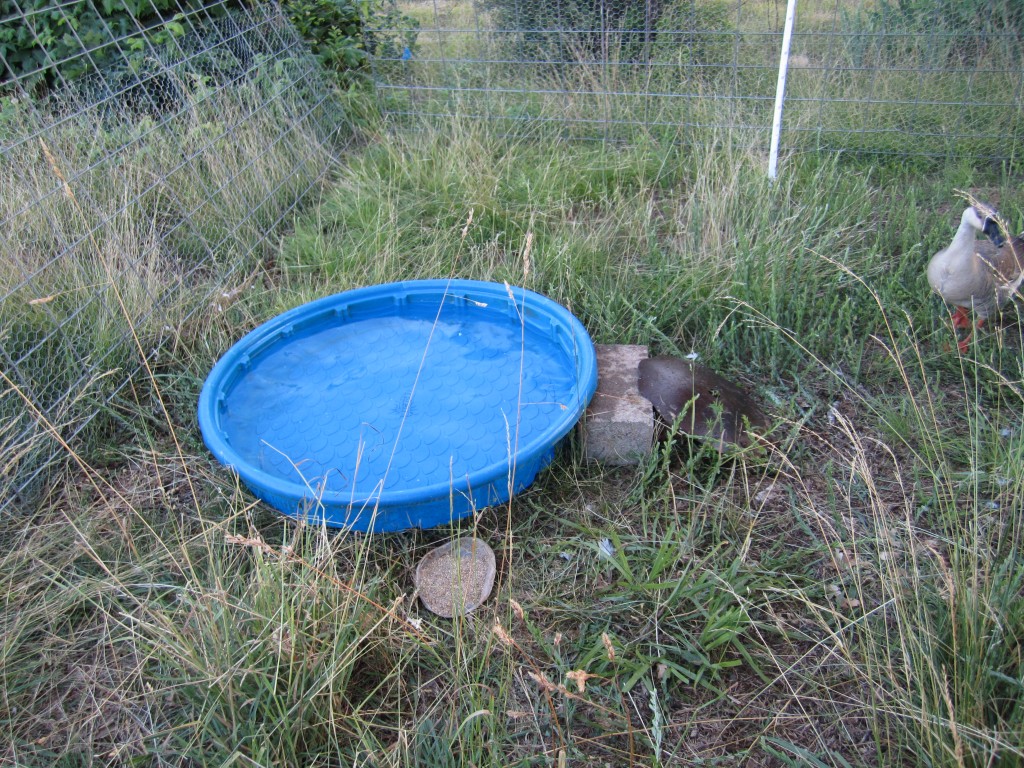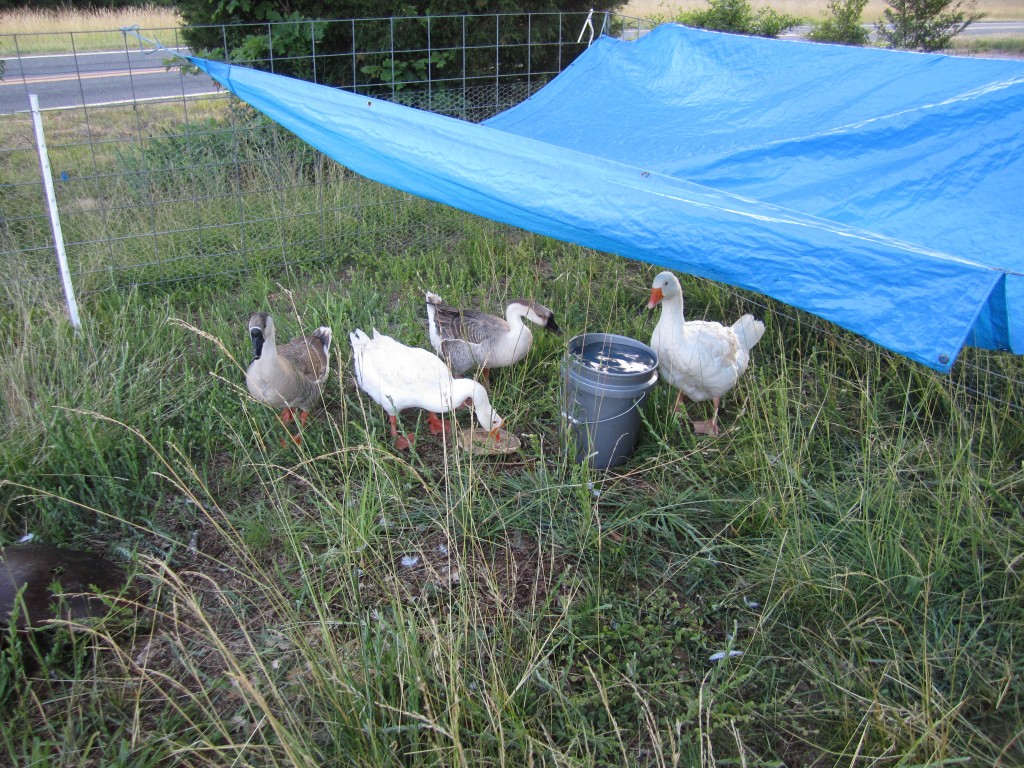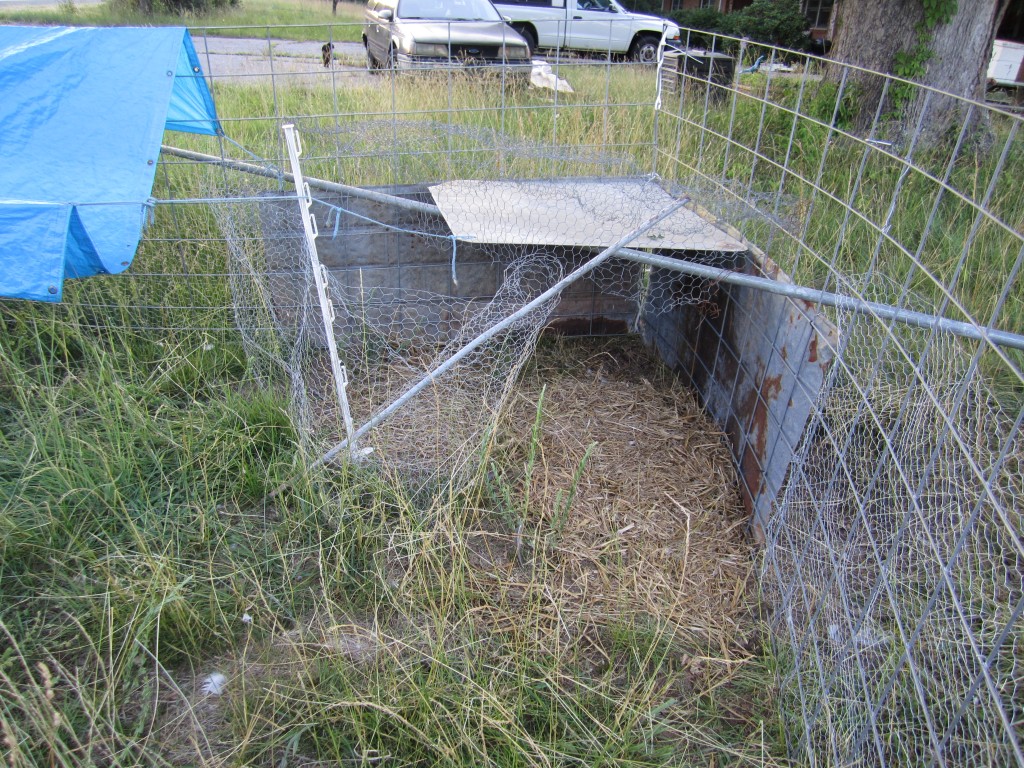I just came across a new concept while researching fencing and it’s pretty cool. Chicken Moats.
A chicken moat is essentially a perimeter chicken run that performs the functions of insect pest control, weed control, deer fencing and protection, trellis, and off course chicken protection and grazing control.

chicken moat diagram from Edible Forest Gardens
The basic concept is to have two fences spaced a short distance apart that encircle a garden or orchard. This creates a laneway where you let chickens graze and scratch. Here they are able to much on bugs, and help control some of the tougher weeds that spread by rhizomes and runners. They are also in a prime location to receive garden scraps, fallen fruit, and pulled weeds and because the two fences create a hallway effect, deer are less likely to try and jump over them, keeping another potential threat out of the garden.
Other benefits include a nutrient flow, where chicken manure washes from the moat into the garden area, or perhaps deep litters are simply thrown over the fence and into the garden as compost. This type of structure can also be used as laneway and set up strategically with gates that allow the homesteader to graze their chickens in certain paddocks at certain times, or even let them loose in the central garden space to clean things up for winter.
Edible vines (kiwis, grapes etc.) and fruiting plants can be planted along the fences of the moat providing both shade and snacks for the birds, as well as pollinator habitat, and fruit for the farmer. Herbs like comfrey and rue can be planted on the edge of the moat, outside of the fence, where the chickens can eat some, but not completely scratch it to pieces.
A concept like the chicken moat is permaculture thinking at it’s best. It demonstrates the principal of function stacking wonderfully, while producing a yield, caring for the earth, animals, and people. As we think more and more about fencing, and multi-species rotational grazing, concepts like chicken moats make me excited to see what our farmstead will look like in the next few years.
